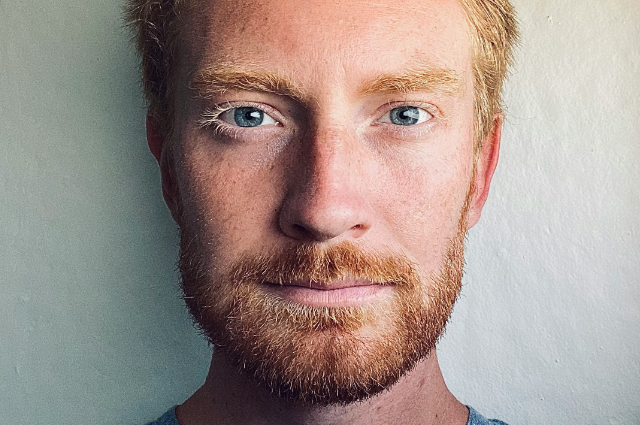
Photo by Mitchell Griest on Unsplash
Human beings have always been fascinated by the idea of youth. The glow of young skin, the boundless energy of early life, and the innocence of a fresh mind have all been celebrated for centuries in myth, literature, and art. Yet one unshakable truth remains: time flows only in one direction. No matter how hard we try, we can never truly become younger. Attempts to reverse age—whether through science, culture, or imagination—have remained symbolic dreams rather than achievable realities. This article explores why reversing youth is fundamentally impossible, drawing from biology, philosophy, culture, and history.
The Biological Truth
The most direct explanation comes from biology. Every human body is made up of trillions of cells that divide, repair, and eventually wear out. Scientists describe a process called cellular senescence, in which cells stop dividing after reaching a limit. This limit, known as the Hayflick limit, proves that cells cannot divide indefinitely.
As we grow older, DNA damage, mutations, and protein misfolding accumulate, leading to visible signs of aging. Efforts such as anti-aging drugs or gene editing may slow this process, but they cannot reverse it. The arrow of time is written into our very biology. To “become younger” would mean erasing the accumulated history of every cell—something science shows is impossible.
Philosophy and the Self
Philosophy supports this view. From Heraclitus onward, philosophers have argued that “time is a river”—it flows forward, never backward.
If one could truly become young again, it would require not only altering the body but also undoing the entire sequence of existence. Memories, experiences, and identities would have to be erased or reversed, which contradicts the continuity of self.
Imagine if a 70-year-old suddenly became 20 again. Would they still carry the wisdom of those 50 years? If yes, they would not truly be young. If not, they would no longer be the same person. Either way, reversing age collapses into paradox.
Culture and Myth
Culture and mythology have long toyed with the dream of eternal youth, but these stories usually highlight its dangers rather than its blessings.
In Greek mythology, the tale of Tithonus—granted immortality without eternal youth—shows how tragic it can be to escape the natural cycle. In Indian epics, youth is never glorified in isolation; it is balanced with maturity, duty, and wisdom. In modern literature, works such as Oscar Wilde’s The Picture of Dorian Gray remind us that the pursuit of eternal youth often ends in corruption and ruin.
Across traditions, cultural imagination has recognized that becoming younger is not only impossible but also potentially destructive to the human spirit.
Law and Society
Law also demonstrates why reversing youth is impossible. Age is a legal and moral marker in society. Rights and responsibilities—voting, driving, marriage, retirement—all depend on the natural progression of age.
If a 50-year-old could, by miracle, become 18 again, would they vote twice in one lifetime? Would they return to school? Would they escape legal punishment? Such contradictions reveal why society cannot function if age could be reversed.
Governments and legal systems operate on the assumption that youth cannot return—and for good reason.
Science, Industry, and Illusion
Even the most advanced scientific efforts show limits. Cosmetic surgery, anti-aging creams, telomerase activation, and stem-cell therapy may reduce the appearance of aging, but they cannot reset biology. At best, they delay signs of age; at worst, they sell false hope.
The booming anti-aging industry—worth billions—thrives on promises that cannot be kept. While appearances can be manipulated, the biological timeline cannot be turned back.
Psychology and Meaning
Psychology also reveals why becoming younger is impossible. Human identity is built on memory and growth. Childhood is precious because it is fleeting; youth is valuable precisely because it cannot be repeated.
If people could become young again, generational continuity would collapse. Parents, children, and grandparents would no longer form a natural sequence. Relationships would lose their structure. In this way, irreversibility gives meaning to human life.
A Global Perspective
Different cultures recognize this truth in their own ways. In Japan, Respect for the Aged Day honors the elderly as carriers of wisdom and continuity, not as people who have lost youth. In the West, while obsession with anti-aging exists, traditions like retirement celebrations and senior communities affirm that aging is not a disease but a stage of life.
Across societies, the message is clear: youth cannot be restored, but aging can be embraced.
The Real Lesson
When people say they want to be young again, they are often expressing regret for missed opportunities. The answer lies not in reversing age but in reimagining how we live today.
A 40-year-old may never be 20 again, but they can still pursue dreams once postponed. A 70-year-old cannot erase decades, but they can inspire younger generations through their stories and wisdom. The impossibility of becoming younger reminds us to live fully in the present rather than longing for yesterday.
Even in science fiction, where time travel and immortality are imagined, reversing age is rarely portrayed as sustainable. Characters who attempt it often lose memory, identity, or reality itself. The message is consistent: youth cannot be repeated without consequence.
The impossibility of becoming younger is not a tragedy but a gift. It ensures the uniqueness of every moment and the value of every stage of life. Instead of chasing what cannot return, humanity should focus on making the most of the time it has.
Aging is not the opposite of living—it is proof that life has been lived.
We may never turn back time, but we can remain youthful in spirit. Curiosity, laughter, and hope are timeless. The secret is not to defeat time, but to live gracefully within it.
. . .
References :
